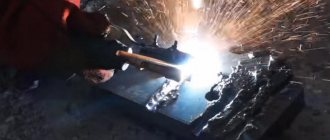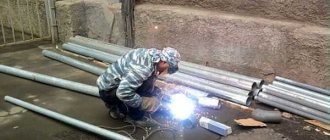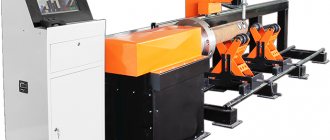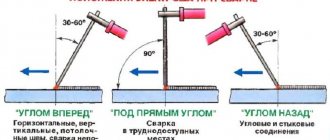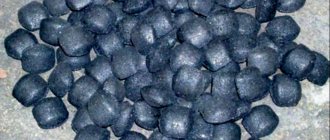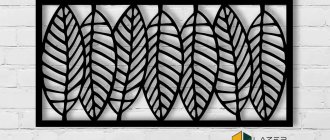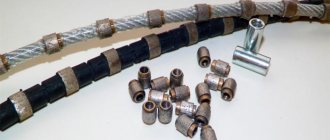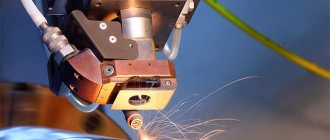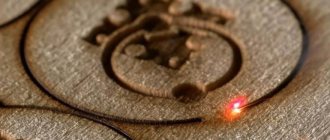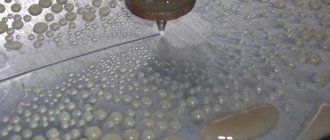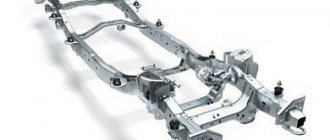Carbon electrodes are rarely used in welding work, but professionals are not yet ready to completely abandon them. One of the oldest methods of joining metal has important advantages over its metal counterparts.
Carbon arc welding is one of the oldest methods of joining metals. It was invented back in 1882. The author of the development was Russian engineer Nikolai Bernardos. Over time, carbon rods gave way to metal rods and today they are used very rarely. However, it is too early to abandon them completely.
Types of carbon electrodes
Among the carbon electrodes on the market, you can find several varieties:
- Round rods with added copper . They are used in various fields and can have a diameter from 3.2 to 19 mm.
- Endless copper plated . Very economical products that can be used for a long time. They require a special machine. Diameter 8 - 25 mm.
- Copper plated flat. They have a square or rectangular cross-section with a diameter of up to 25 mm.
- Semi-circular with the addition of copper. These rods are used most often. On one side they are flat, on the other they are round. This allows you to use them for any task. The diameter can be from 10 to 19 mm.
- Hollow copper-plated. Used for chipping and creating U-grooves. Their diameter can vary from 5 to 13 mm.
Welding principle
There are two welding methods when working with a carbon electrode:
- right, it involves moving the electrode from right to left, and the additive goes right behind it$
- left, in such a situation the rod moves from left to right, and the additive moves in front of it.
Right-hand welding is considered more effective in terms of the use of thermal energy in the welding area. This method is more convenient for welding parts of large thickness. And the speed of the process itself is approximately 20-30% higher. However, in practice, welders give greater preference to left-handed technology.
To summarize, it should be said that most often carbon electrodes are used for welding copper wires; at home, they have found their application in cutting metals. [Total: 2 Average: 1.5/5]
Most popular brands
There are 2 main types of carbon electrodes on the market. These are SK and VDK. They are respectively designed for conventional and air-arc welding.
Arcair electrodes from Esab are most often found on the Russian market. They perform the following work:
- elimination of defects;
- repair of products and structures;
- removal of seams;
- preparatory work;
- removal of excess material;
- trimming excess reinforcement and product fragments.
Welding stainless steel with carbon or graphite electrode
Carbon electrode welding is performed with a direct arc, that is, the arc passes between the metal being welded and the electrode. Welding with carbon electrodes is usually accompanied by evaporation of the electrode itself.
The welding process itself occurs with direct current with straight polarity. Due to the fact that the boiling and melting points of carbon electrodes have a difference of approximately 400 degrees.
When welding with carbon electrodes, the process is carried out without filler material. Sometimes it can be carried out with filler material. You can also carry out welding by first placing filler material in the groove of the edges. Welding without filler material means that an arc melts the edges of the parts of the future product. Welding of metals using the supply of filler material can be performed in the right and left way.
The welding current is selected based on the thickness and type of electrode coating. Also in this case, it is important to take into account the thickness of the sheets or parts being welded. Nowadays, welding with graphite electrodes is quite common, but many professional welders decide to use other electrodes for welding stainless steel.
Still, many people use carbon or graphite electrodes and with their help they can easily correct defects in casting materials or finished products. Many professional welders appreciate this feature, because not every type of electrode can easily correct casting defects or mechanical damage.
If stainless steel is welded overlapping, the quality of welding only improves. Many professional welders weld stainless steel butt to butt. They do this for aesthetic reasons or at the request of the customer. No one should judge someone if that person welds metal in one way or another. Of course, for higher quality and strength of the weld, you need to overlap weld . However, if you are a professional welder, then you can already perform butt-to-butt welding, because only a professional can weld efficiently at such a complex joint of product parts.
Stainless steel is in high demand, so if you want to go from a novice welder to a professional, you should definitely learn how to weld stainless steel. Without such a useful skill, your services will not be in great demand, because stainless steel is used in many industries.
For more comfortable learning, you need to immediately buy high-quality electrodes that will ensure high speed and durability of the product. In order to buy electrodes at competitive prices, you need to go to the “Contacts” page of our website. There you will see links to the websites of our partner manufacturers, which are known for high quality products and the best prices in Russia. Manual Arc Electrodes Broco Electrodes Carbon Steel Electrodes
Graphite electrodes: welding of copper wires with a graphite electrode
There are different ways to connect copper wires, but welding is the most effective, fast and reliable of them.
The seams created in this way are characterized by high strength, excellent electrical conductivity, meet standards and safety requirements, and last for many years. To weld wires, craftsmen use graphite electrodes, which have undeniable advantages.
Graphite electrodes are able to conduct current without melting, which happens with wire made from other materials. This is the main distinguishing feature of such products. Graphite electrodes are available with tips of different shapes and lengths; they can be regular or copper-plated.
Let us describe the most advantageous characteristics of electrodes of this type:
- affordable cost, widespread;
- economical consumption;
- the material from which the rod is created does not stick to the parts being connected;
- the ability to quickly heat up to the melting temperature of the metal;
- to ignite an arc when operating an inverter, a current of 5-10 A is required.
It should also be noted that a weld on copper wires, made using graphite electrodes with your own hands, is resistant to corrosion and high temperatures, but the wire itself is not prone to cracking when performing work.
Table of welding modes with graphite electrodes.
With their help, you can weld copper rods or aluminum wires, but graphite welding electrodes have several disadvantages, which should not be forgotten:
- welding connections using graphite rods are difficult because they have a small diameter of 6 mm;
- the operational parameters of the parts being connected may deteriorate due to the increased concentration of carbon in the metal, which is provoked by the use of graphite rods;
- graphite electrodes with a certain type of tip are needed to perform a narrow list of operations, so it is important to select different types of such parts for the rods when performing different types of work;
Application of rods and features of working with them
The graphite electrode has found application not only for making welded connections of wires: it is used in a much larger list of operations.
Graphite welding rods are necessary for pre-processing metal surfaces before welding work, as well as other types of processing, cutting metal workpieces, cleaning metal edges, etc. Not only metallurgy actively uses electrodes of this type, but also legal proceedings.
Carbon arc welding.
Electrodes for welding made of graphite allow you to quickly and with a high degree of efficiency cut rivets and pierce elements made of alloy and carbon steel.
They are also relevant when melting steel and cast iron, as well as some alloys in electrothermal furnaces. And thanks to the presence of nipples, such rods can be connected to each other, which allows for a continuous supply of consumables for welding in the furnace.
Graphite rods are also relevant for performing other operations:
- welding operations with products made of non-ferrous metals, elements made of thin metal;
- welding of defects that appeared due to violation of casting technology;
- surfacing of hard-alloy parts to a metal base.
Often, graphite electrodes are used for welding together with a filler that is supplied during the operation or placed in advance at the location of the seam.
It is worth recalling that working with graphite and a welding machine has its own characteristics, which should definitely be taken into account in order to obtain durable, extremely strong and reliable welded joints:
- To save welding rod consumption and maintain a stable arc during long-term welding, straight polarity should be used. That is, you need to apply minus directly to the electrode.
- It is important to carry out welding processes taking into account the influence of external factors on the stability of the arc, this will allow achieving a better result.
- When working with graphite electrodes, the efficiency value is lower than when working with consumable electrodes.
- Welded joints when welding with graphite are characterized by average ductility. The seams may also have voids, which affects their durability.
For these reasons, graphite welding should be performed by a qualified craftsman, and beginners in these matters should practice well beforehand.
Drawing of welding work using a carbon electrode.
There are two technological methods that are relevant for working with graphite rods:
- The material is fed directly into the arc flame. In this case, the welded wire is placed between the metal element and the electrode at an angle of 30 degrees and is fed slightly earlier than the electrode itself. The rod feed angle is 70 degrees, which significantly speeds up the work process.
- The master welds a bead of base metal using an electrode, after which an additive is fed into it. The main difference of this technology is that the rod is fed first and only after that the wire.
The danger of using this technological technique for an inexperienced welder is the high probability of burning through the metal, although the speed of work greatly increases. For this reason, it is more suitable for operations with metal parts that have thick walls.
When working with graphite electrodes, it is important to remember the following: the determining parameter when using them is the current density used. If the maximum value of this parameter is exceeded for any reason, the graphite may deteriorate.
To extend the service life of the products, special nipples can be screwed in on both sides to extend the electrode. This solution will improve the reliability of graphite electrodes and save money on the purchase of new rods.
Current regulation
The current for welding wires is adjusted within the range of 30-120 amperes, this is the range that is typical for most inverter welding units.
Gas shielded welding diagram.
The exact welding current in any embodiment has to be determined empirically by the welder due to the following factors:
- any inverter model is characterized by certain features, so it is extremely important to carefully read the instructions for a specific device;
- the network voltage of a particular building may not correspond to 220 Volts;
- the copper conductors of the wires contain components of different compositions if they are made by different manufacturers;
- The experience of the craftsman largely determines the results of a welding operation using graphite rods.
It is important to know the current values at which it is possible to effectively connect wire cores with different cross-sections when welding with a graphite electrode:
- when welding cores with a diameter of 1.5 mm2, the inverter is set to 70 amperes;
- three wires with the same cross-section should be welded at a current of 81-91 amperes;
- the current strength for connecting three cores with a diameter of 2.5 mm2 by welding should reach 81-101 amperes;
- four 3 mm2 wires are welded with a current strength in the range of 101-121 amperes.
Welding aluminum wires
A graphite electrode is used for spot welding of copper and aluminum wires. Operations are carried out under submerged arc. This is a special powder inside the welding wire that melts and produces shielding gas.
Scheme of argon-arc welding of aluminum.
The latter prevents welded edges from contact with oxygen and resulting oxidation.
The current current value is set using the regulator. The current is rectified by using a diode bridge and a ripple filter.
Although we note that experienced craftsmen can connect wires by welding even with alternating current and without adjustment by waiting for the required arc holding time. But performing welding work with alternating current gives a lower quality result.
How to make and weld twist correctly?
It is important to prevent the insulating material of the wire from melting, which will require attaching a metal radiator to the point where the twist exits the insulation. More often than others, the copper option is chosen, because this metal is characterized by high thermal conductivity.
Before starting welding of wire cores, preparatory work should be carried out. Remove insulation and varnish if present. The twisting is done as tightly as possible so that the turns are in close contact with each other.
The optimal twist length is 5-6 cm. In this case, the ends of the wires are cut off at the same distance so that they fall within the welding zone.
In the place where the radiator is fixed, you will need to attach the unit ground clamp to the wires, and then bring the graphite electrode to the cut edges. Contact for welding should be as short as possible.
The optimal time is 1 second, after which a section of molten copper in the form of a ball will form at the end of the twist. In the same way, the remaining twists of wire strands can be welded using graphite electrodes.
Safety requirements for graphite welding
A graphite electrode allows you to create reliable connections between parts of various types of metal structures, but welding is extremely important to carry out taking into account safety standards.
Copper welding diagram using a graphite electrode.
Let's describe them in detail:
- the current supplied to the welding cables must be turned off before starting work in order to protect yourself from electric shock;
- operations using a welding machine should be performed only in special clothing, shoes and using personal protective equipment that will help protect the eyes, hands and skin of the body from burns;
- the work site is cleared of flammable items, which will avoid the risk of fire;
- after welding one twist, it is important to wait until it cools down, and only then proceed to work with the next one;
- excessive haste and unwillingness to wait until the first twist cools down can lead to a burn on the welder’s body;
- the twists are insulated after welding using heat-shrinkable tubing and electrical tape.
Let's sum it up
Graphite electrode is a popular consumable material used to make welded connections on wires made of different metals: copper, aluminum, steel, cast iron, etc.
Working with graphite rods is not easy, but with a sufficient level of skill, the welds are durable, resistant to corrosion, high temperatures, and other negative external factors.
Carbon electrode welding
Carbon electrodes for welding are used less frequently than analog electrodes with a steel consumable rod. But in some situations they are simply irreplaceable.
In addition, using a carbon electrode, you can carry out a wide range of work: welding, cutting, melting. Plus, it processes almost all types of modern metals, from refractory and heavy to light and porous.
But first you need to understand what a carbon electrode is.
This is a rod based on coal (coke), plus several additives: resin is used as a binder, and metal powder is used as a strengthening element. The dimensions of the carbon electrode vary in diameter from 1.5 to 25 mm, and in length from 25 to 300 mm.
The production process is very simple: making a mixture of components, molding and drying. The question may arise why there is such a large variation in length. It's all about various problems that are solved by carbon electrodes.
For example, if the parts to be welded are located in an inconvenient place, then using a long rod solves the problem.
- 1 Types of carbon electrodes
- 2 Welding mode
- 3 Welding features
Types of carbon electrodes
Today, manufacturers offer five types, which differ from each other in cross-sectional shape.
- Round. Application is unlimited. Rod diameter – 3.2-19 mm.
- Round endless. They got their name for the lowest consumption, that is, these are the most economical welding electrodes in this category. Diameter – 8-25 mm. Usually a special machine is used for welding.
- Flat. The cross-section of the rods is rectangular (sometimes square) measuring 8-25 mm. Mainly used for sealing defects on the surfaces of steel castings.
- Semicircular. Cross section – 10-19 mm. Today these are the most popular electrodes, with the help of which you can solve any problems associated with cutting metal workpieces. When welding, the seam is formed into the required shape. They have no equal when it comes to edge shaping.
- Hollow. Rarely used. A distinctive feature is that they can be used to form a U-shaped groove. Rod diameter: 5-13 mm.
To increase the strength characteristics of consumables, their production technology began to use the method of sputtering copper powder onto the electrodes. The second method is electrolytic.
This is when both the rod itself and copper powder are placed in a bath of electrolytes. Here, under the influence of an electric field, copper settles on the plane of the consumable. That is, we have a subspecies called copper-coated carbon electrodes.
The type of separation is exactly the same as conventional carbon electrodes.
Welding mode
The carbon-type electrode belongs to the category of infusible elements. This is its main difference from the main category of metal welded rods. Therefore, when welding with its help, only direct current of straight polarity is used. That is, the minus is connected to the electrode, the plus to the metal workpiece.
It turns out that to weld metals using a carbon electrode, you will need a filler element. True, not always. For example, for flanging thin metal workpieces or for some options for welding corner joints.
This is both more profitable and convenient.
It should be added that the productivity of welding work when connecting sheets with a thickness of 1-3 mm using carbon electrodes without the use of filler material is several times higher than when welding with conventional non-carbon electrodes.
Process Features
Electrodes made from coal differ from metal ones in that they are infusible. This means that during welding they act as a conductor of electricity, but do not become part of the weld pool.
During operation, the carbon rods heat up to very high temperatures. And if you continue heating, then almost immediately they will go from a molten state to a boiling state (by the way, coal boils at a temperature of 4200 ° C).
Due to the characteristics of the material, only direct electric current of straight polarity can be used in the welding process. Accordingly, the minus (cathode) here should be on the electrode, and the plus (anode) on the metal surface of the product.
When working with carbon electrodes, the welder usually requires filler elements. In this case, welding can be done in two ways:
- from left to right (in this case, the additive is behind the electrode);
- from right to left (there is an additive in front).
Interestingly, when welding from left to right, thermal energy is used more efficiently, and this allows you to increase the speed of work. However, in practice you can often find the “right to left” technology - it is more familiar.
General information about carbon welding
This type of welding is used quite rarely. The structure of the base material is not suitable for welding most metals. However, there are alloys with which it performs well.
These are non-ferrous metals, low-carbon steel or cast iron, the thickness of which does not exceed 3 mm. And also when soldering copper wires.
The key indicator of this material is that it does not melt when exposed to high temperatures. Only melting and evaporation of the copper coating on the surface of the filler material occurs.
Due to this structure, mixing of the filler material with the metal of the part does not occur. This results in minimal rod consumption, and for welders working with consumable type – unusual process characteristics.
Welding metal surfaces when using non-consumable filler materials occurs by mixing the metal of the parts themselves. Under the influence of high temperatures, the edges of the part melt.
Molten metal fills the weld joint, forming a seam web.
If the size of the gap between the parts does not allow the formation of a reliable seam only by mixing the base metals, filler wire is used for the connection.
Description of technology
Air arc cutting is applicable at home. However, as with other treatments, safety is important when cutting.
Before starting welding and gouging work, the equipment is checked for serviceability. As well as metal preparation - cleaning and degreasing. After this, the welding mode is adjusted and the current parameters are set.
You should not set this parameter to high values. Excessive current will quickly evaporate the copper coating of the filler material. This will affect the quality and uniformity of melting of the body of the part.
In addition to welding equipment, a compressed air cylinder is prepared. It should not have any damage or dents.
After making sure that the cylinder is in good condition, the pressure is adjusted. For air arc gouging, four to six bar is sufficient.
The filler element is inserted into the holder so that the visible part does not exceed a length of 10 cm. Air is supplied and the arc is ignited.
After the formation of the weld pool, compressed air is directed to the working area. Both parts of the treatment should be carried out evenly.
Advantages and disadvantages
Next, let's talk about the advantages and disadvantages characteristic of graphite electrodes.
Advantages.
- These types of rods are very resistant to current.
- Due to good electrical conductivity, rod wear is minimal.
- Graphite electrodes do not oxidize when working at high temperatures, so they can be used much longer.
- Standard equipment is sufficient.
Flaws.
- They do not have a wide range of applications. For use in certain conditions, you will have to buy tips of different shapes and other materials.
- During use, the amount of carbon in the base metal can be increased.
- It is difficult to use for welding thin joints, since such a rod does not have a diameter of less than 6 mm.
Properties and weldability of aluminum
First of all, you should understand the properties of the metal. When welding aluminum with an electrode, any master will be able to notice that the behavior of the weld pool is noticeably different from steel products. This is due to the high fluidity of the material. In the molten state, aluminum is not viscous, but more like water, so the formation of a seam in this case becomes a physically complex process. For the same reason, it is almost impossible to carry out normal ceiling and vertical welding. Even in a horizontal position, you have to use a reduced current.
It is also worth noting the main enemy of normal weldability - the oxide film. It is constantly formed on aluminum, and the rate of its formation is quite high. It is harmful because it has a melting point almost three times higher than that of aluminum. If it is not removed, then the drops of molten metal will be enveloped by it and will not be able to connect normally, and the seam will be uneven, blurry and will not perform its function properly.
Oxide film when welding aluminum with an electrode
One of the properties of the metal is a high coefficient of expansion, which provides shrinkage that differs from steel. If you do it incorrectly, the part may end up deformed when it starts to cool. To do this, you should make a competent calculation of the consumables so that they adequately fill the joint. Do not forget about temperature deformations, which are often encountered when working with thin sheets. Welding aluminum at home should be carried out taking into account the high electrical and thermal conductivity of the material.
Oxide film when welding aluminum with an electrode
Problems arise mainly in the seams after welding is completed. Often you have to deal with cracks and pores. The metal is subject to the formation of stresses, which can result from the hydrogen present in the weld pool. It gets into the metal and then tries to get out, which is why after some time cracks may appear in the entire seam. If sufficient protection from atmospheric oxygen is not provided, pores may appear on the surface of the connection, so the electrode coating must be dried before use and carefully selected according to the characteristics of the process. Welding of aluminum with a conventional electrode, as well as its alloys of this metal, is carried out in accordance with GOST 14806-80.
Device and characteristics
Carbon electrodes are round or rectangular rods made from electrical coal, which is a mixture of carbon (in the form of coke or anthracite), soot and binders (coal tar or liquid glass). Round ones are made by extrusion and supplied to consumers in the form of rods with a diameter of 4 to 18 mm and a length of 250÷700 mm, and rectangular ones are made by pressing in molds. In addition to GOST standard sizes, special rods of increased thickness (15x15, 20x20, etc.), manufactured according to specifications, are also used.
Carbon electrodes are much cheaper and stronger than graphite electrodes. But the resistivity of electrical coal is several times higher than that of graphite. Therefore, to improve the electrical characteristics of carbon rods, their surface is coated with copper.
As an example, the table shows the main parameters of round copper-plated carbon electrodes of the VDK brand with a length of 305 mm.
| Diameter (mm) | Operating current (A) | Metal Removal (g/cm) | Groove (width/depth) (mm) | Cutting thickness (mm) |
| 4 | 150÷200 | 10 | 6÷8/3÷4 | 7 |
| 6 | 300÷350 | 18 | 9÷11/4÷6 | 9 |
| 8 | 400÷500 | 33 | 1÷13/6÷9 | 11 |
| 10 | 500÷550 | 49 | 13÷15/8÷12 | 13 |
A prerequisite for using these products is to perform work only with straight polarity. When turned back on, the arc is very unstable, the quality of the weld due to carburization of the metal is low, the operating temperature of the carbon rod is much higher, which increases the rate of its evaporation.
Advantages
- Welding aluminum with a consumable electrode is the simplest and most affordable option that can be used by almost any welder, since it requires a minimum set of equipment;
- The preparatory procedures go quite quickly, and after work it doesn’t take much time to return everything to its original form;
- The consumables used here as electrodes are very accessible, widespread and have a relatively low cost;
- The cost of welding is much lower than when using other methods;
- The master does not need extensive experience in using other equipment, since everything happens according to the most standard scheme.
Flaws
- The quality of the connection suffers greatly due to the insufficient protection of the weld pool provided by the electrode coating;
- Selecting electrodes can become a serious problem if it is not known which metal alloy is being worked with;
- It is required to use flux as an additional consumable;
- The high speed of electric welding makes it difficult to form a seam normally.
Electrode welding methods
The technology of welding aluminum with electrodes involves the use of several different methods, which are most often found in the private and industrial sphere.
Welding with conventional coated consumable electrodes. A standard welding transformer is used here, which is also used for welding other metals. In this case, the welding technology is no different from steel seams, but the result may not be of the highest quality, since a number of problems arise due to poor aluminum welding.
Welding aluminum with a non-consumable electrode. Here the problem with the selection of filler material no longer exists, since the bath is formed from the metal of the workpiece itself, but for this, the parts themselves must have a thickness of at least 3 mm and be butt welded. There are already some nuances to the work here, since it is necessary to ensure protection of the weld pool.
Welding aluminum with a carbon electrode using gas. In this case, in addition to the infusible electrode, a protective gas is used, which is supplied from a special burner. This can be welding aluminum without argon, for example, with acetylene or propane and other gases, since everything depends on their availability at the master’s disposal.
Selecting an electrode and brand of aluminum welding electrodes
OZANA-1 – used for welding parts and structures made of technical aluminum in its pure form. We work with such brands as A0, A1, A2, A3.
Electrode OZANA-1
OZANA-2 – used for welding casting defects and surfacing work on parts made of silicon aluminum alloys. Work is carried out with such brands as AL4, AL9 and AL11.
Electrode OZANA-2
OK 96.10 - this type refers to an alkali-salt coating, which is well suited for welding technical aluminum. When choosing a welding mode for them, the voltage should be reduced, since the melting rate of these products is approximately three times higher than that of steel ones.
Electrode OK96.10
OK 96.20 - an alkali-salt coating is used here, which is well suited for welding rolled metal from various metal alloys, in particular aluminum with manganese or magnesium. The electrode itself uses an aluminum-manganese alloy rod. Before use, the electrodes must be heated to 150-300 degrees Celsius, which is due to the high hygroscopicity of the coating.
Electrode OK96.20
"Important!
In almost all cases, welding is carried out in lower positions, with only a few exceptions when this is possible in a vertical position with limitations.”
Preparing metal for welding
Before welding itself, a preparatory procedure should be carried out that will help improve the quality of the connection. It begins with cleaning the metal surface mechanically. A metal brush or sandpaper should be used to remove the layer of dirt, oil and other deposits, including oxidative film, which will interfere with welding. After this, you can treat the edges of the parts with a solvent such as acetone, which will help remove any remaining items after mechanical cleaning. If the part is too thick, it may require bevelling. It is necessary for thicknesses of 4 mm and above.
Instructions
- Pre-processing of parts is carried out as described above;
- After this, flux is applied to the surface of the workpieces to be welded at the welding points;
- The electrodes are heated;
- The metal also sometimes needs to be heated, especially if it is thick, in order to melt the flux and evaporate the moisture;
- You can start welding;
- Allow to cool, gradually heating the seam with a burner flame;
- Check the quality of the connection.
"Important!
Do not forget that due to the high melting rate of the electrode, the speed of aluminum welding increases.”
To make everything go more accurately, you should watch the video welding aluminum with an electrode.
Welding mode
The carbon electrode for welding falls into the category of infusible electrodes, which distinguishes it from other metal rods. Thus, when carrying out welding work with such a product, you can use only direct current of direct polarity. This means that the minus is connected to the electrode, and the plus to the metal workpiece.
In certain situations, welding requires the use of a filler element. For example, when flanging thin metal workpieces. This procedure will be more profitable and simpler. There is a large selection of additives on the market that are used in this type of welding. For example, if you are working with copper, it is better to give preference to bronze filler material.
You should also pay attention to the parameters of the cross-section of the filler wire or plate. If it is larger, then there is a risk that the seam will not be welded through. If the cross-section is insufficient, on the contrary, you can burn it out.
Advice! When choosing copper-plated carbon electrodes for welding, select the filler material based on the thickness of the workpieces being joined.
Advantages of inverter welding machines
To connect metal structures, you need experience and the welding machine itself. The best option is to use inverter equipment, which is great for working at home. This device is inexpensive and small in size and weight. Small sizes do not affect the quality of welding work. All connections are neat and reliable. craftsman can handle this type of welding .
The design of the inverter welding machine consists of the following elements:
- Power supply with filter and special rectifier unit.
- The inverter unit is responsible for converting DC voltage into alternating high-frequency current.
- A transformer is used to reduce the high-frequency current. It is he who is responsible for safety and prevents equipment overheating.
- The power rectifier serves as a means of supplying direct current to the output of the device.
- The device is controlled by an electronic unit.
Inverter welding uses various innovative technologies that have helped to significantly reduce the size and weight of the installation.
Due to its small size, it is easy to store at home or install in any convenient place while working. The weight of such equipment ranges from 5-15 kg. That is, moving the welding machine will not be difficult. This device helps to weld any metal structures if you work correctly on an inverter welding machine. Included with the equipment is an instruction manual, which contains a lot of different useful information indicating how to properly weld using inverter welding, choose electrodes depending on the type of metal , etc. Such a brochure will be useful even for experienced specialists.
When purchasing, it is important to pay attention to the presence of instructions in Russian, because using blind welding is difficult, not to mention dangerous. There are cases when equipment is bought second-hand, but the old owners have lost the instructions. Then it is best to find a specialist who will clearly show the main points of welding control. You can’t start testing it on your own without even banal instructions.
Composition and technical characteristics
The main component of coal rods is coal coke. In addition to it, the composition contains metal powder, which gives the electrode strength and a resin that connects all components. The diameter of such electrodes can be different - from 1.5 mm to 300 mm.
In addition to size and cross-section, carbon electrodes have other parameters:
- The current strength that is supplied to the electrode. It depends on the material and equipment you are working with.
- Shapes and sizes of grooves . They depend on the end of the rod and its dimensions. The most popular are large electrodes, which can be used to work with massive parts.
- The thickness of the cut depends on the current power. But here you need to carefully ensure that the product withstands and does not melt.
Carbon electrodes in home workshops
Copper wire welding diagram.
To work with them in a makeshift manner, a traditional electric arc welding machine is quite suitable. One of the advantageous aspects is a very modest current strength for creating an electric arc due to low thermal conductivity: 3 - 5 A is enough.
An electric carbon arc can be extended to a length of up to 50 mm; it is very easy and comfortable to guide along the future seam due to the slow evaporation of the electrode during welding and the absence of a sticking effect.
Learn welding with carbon electrodes using examples of connecting wires, metal workpieces with thin edges, etc. – a wonderful opportunity to master all skills quickly and efficiently.
Important advice: this type of welding should only be done indoors. The fact is that the arc in such technologies can go out at the slightest breath of wind, not to mention gas flows, magnetic fields and other environmental factors.
It is best to sharpen the electrode at both ends: in this case, you will not need to waste extra time rearranging the consumables in the holder. In addition, the risk of consumable overheating during welding will be reduced.
And with sharpened ends, the holder can rotate 180° when one end overheats, so that the other end can continue working. This will also allow you to save on consumables.
Sometimes non-consumable carbon electrodes are used for welding copper busbars in transformers at substations. Copper wires are also welded, but this is mainly in small artisanal workshops.
The best option for filler materials is bronze alloy rods. They come with different diameters, which must be selected based on the thickness of the metal workpieces being connected, which is used in calculations using a special formula.
Another type of work in which squares are used is cutting metals.
Carbon gouging
Gouging is the removal of a narrow surface layer using carbon arc welding. The word itself originates from the verb “to plan,” since this process is somewhat similar to the processing of grooves on a planing machine. Gouging technology is based on heating the metal with an electric arc to boiling temperature, followed by blowing it out of the weld pool with a narrowly directed air flow. Gouging is carried out to depths of up to tens of millimeters, and its productivity, depending on the thickness of the carbon electrode and the current strength, is measured in grams of metal removed per centimeter of groove.
Wire welding technology
Electrical wiring welding technology is based on melting current-carrying wires and their further fusion with each other. The entire process takes place at high temperatures of the order of 1000°C, when the metal of the conductors is in a liquid state. Heating is carried out using an electric current of tens and even hundreds of amperes.
Welding wires with carbon electrode
